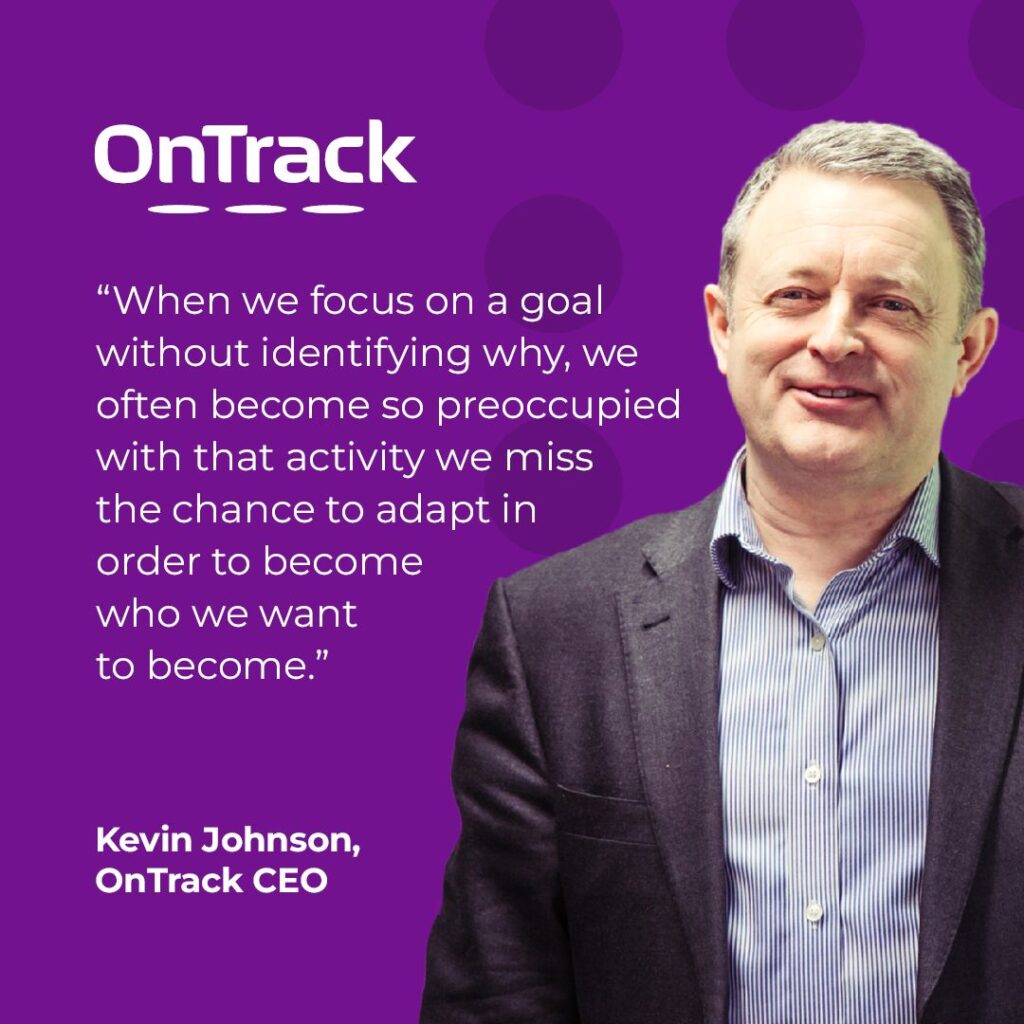Company culture impacts everything from employee engagement and retention to sales, client outcomes and, ultimately, business success.
Yet all too often it is hard to define and is something that companies pay lip service to, becoming an agenda item for policies and procedures without any tangible outcome.
So how can organisations impact culture in a positive and meaningful way?
What is employee culture?
From lack of engagement to ineffective sales, businesses often approach OnTrack International to tackle the specific problems that ultimately derive from culture. We take a three pronged approach to addressing these issues by helping organisations firstly to understand their mindset, before helping them to develop both their tool set and their skill set.
Importantly, culture relates to the way we do things, rather than what we do. This is a significant distinction because organisations often look at shaping culture via policies and procedures when it should be the other way around. An organisation’s processes, policies and capabilities should be driven by its culture; its culture driven by its mindset; and its mindset driven by its purpose.
In his book “Start with Why”, Simon Sinek argues that by aligning the ‘why’, ‘how’ and ‘what’ of an organisation, companies can positively impact everything from who they hire to what sales process they have in place. The strand that ties these factors together is the purpose (the “why”) of a business.
How to shift the focus from output to input?
In 2015 we removed financial targets from consultants at OnTrack International because we wanted to consultants to driven by one goal: to be the most valued person a client had ever worked with.
By shifting the focus from output to input, we made a positive impact on our culture. We enabled the team to make choices in a way that delivered against the purpose of our business.
Conversely, when we look at toxic culture, it’s usually because people have taken a siloed or ego driven approach to achieving an outcome. The outcome has become a distracting element from the purpose.
Take financial services as an example. Banks exist to help customers make great choices, plan finances and in certain cases provide funding.
Yet back in 2018, the media was awash with stories of unethical sales, questionable risk management and toxic working practices.
In some cases, bank teams were focussed on revenue to such a degree that they destroyed the value they were meant to be bringing to the customer. Such action negated organisation’s purpose and negatively impacted its culture.
How to find the purpose of an organisation?
While the leaders of an organisation are ultimately responsible for its culture, it’s often middle managers that have the biggest impact day to day. However, to get middle managers on board, leaders must articulate a clear vision and purpose.

Finding the authentic purpose (the “why”) of an organisation is a process of discovery. Whether achieved by undertaking some deep diagnostic work, or simply listening and observing as to what makes an organisation tick, it’s important to discover and define a purpose that everyone can relate to.
Often a good way of defining the purpose of an organisation is to discover what its clients value most about the business. Does it help them grow? Think clearly? Align and energise their colleagues? Help them make great choices? Or challenge their thinking?
This goes deeper than company values. The output of such an exercise would typically be a purpose statement. The wording of this statement is arguably less important than process of engaging people in discovering and defining what it means to them.
Our recent work with a global financial services business put these principles into practice.
While building its flagship new head office, the business contracted over 20 different organisations, from designers and builders to IT consultants, to bring its vision to life over a five-year period. Our objective was to help those 20 organisations become one, and we did that by developing a very clear shared purpose. This helped to create an environment where people could thrive, grow and perform together. By doing so, the construction has been smoother and with fewer faults, more ownership and less blame than would normally be the case when 20 different contractors are engaged.
The importance of building a strong culture
In the current economic climate, many of our clients are asking “how can I do more with less?” Businesses are understandably focusing on efficiencies, processes and financial measures to drive operational improvements. However, without a strong culture, they will struggle to make choices in a way that delivers against their purpose.
Indeed, the challenges that businesses face ebb and flow. The world is ever changing and so too are the pressures on organisations and their people.
It is those organisations with a clear and authentic purpose, combined with a strong company culture, that will be best placed to face these challenges.



